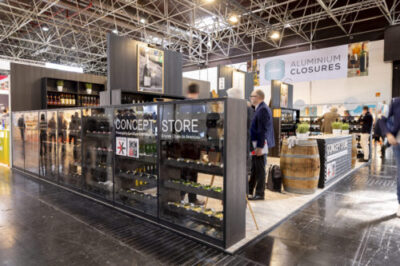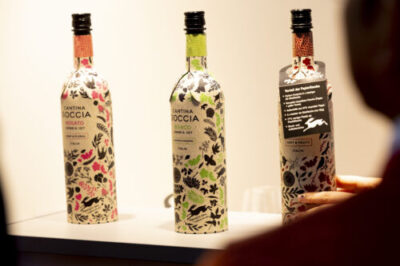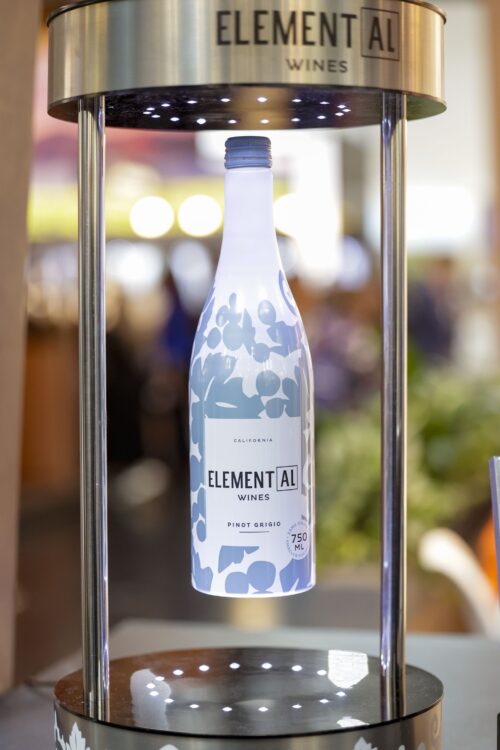: Alternative Packaging in Wine
“Don’t judge a book by its cover” is one of the unforgettable clichés taught from earliest childhood. Yet, more often than not, this is exactly what we do. Also when it comes to wine. In fact, especially when it comes to wine, because the label is such an eye-catcher on the shelf and on the screen.
Despite the fact that we now know that glass accounts for well over a third of a wine’s total carbon footprint; that the shipping and manufacture of glass bottles account for more than half of a producer’s greenhouse gasses; that we know switching from glass to alternative formats could save, for example, “as much as 750,000,000 Kg CO2e of emissions every year in the UK alone.” Despite all of that and much more, we continue to believe the 400-year old fallacy that all wine belongs in glass.
When we tackled this topic at ProWein 2023 we focused on the alternative in alternative packaging; in a sense we could have called it “anything but glass.” A year later, and the topic is more current than ever with the latest advancements on display through all 13 exhibition halls at ProWein 2024.
The Unbeatable Lightness of Glass
Curiously, the thing that has been receiving the most attention over the last year is not alternative packaging but rather an alternative approach to traditional packaging. It even has its own word: lightweighting.
At the end of last year, European glass manufacturer Verallia (Hall 9, booth B90) announced that it had designed the lightest Bordelaise-shaped bottle in the world at just 300 grams. The previous gold… or glass standard was just under 400 grams. A standard 750-ml glass wine bottle weighs on average around 575 grams, with some heavyweights topping the scales at 900 grams. Production for the Bordelaise Air 300G is scheduled to begin later this year. Verallia also concluded tests in March of last year on the lightest Champagne bottle. The new 800-gram bottle shaves 35 grams off the previous lightest weight, thus representing 4% less CO2 emissions per bottle. Champagne was the first wine region to seriously address this issue well over a decade ago.
Italian biodynamic producer Alois Lageder (Hall 16, booth H55) recently released a lightweight Burgundy-style bottle developed with Swiss glass manufacturer Vertropack. This move has reduced the producer’s annual glass consumption by 17%, or 87 tons. But for Lageder, a commitment to change extends beyond one’s own borders. To that end, Lageder is choosing to leave the 450-gram bottle called “Summa” unpatented with the hope that it will motivate other producers to “lightweight” themselves.
There is growing pressure within the industry on producers to lower their environmental footprint. German grower association, Verband Deutscher Prädikatsweingüter (VDP), reported that last year 45 of the organization’s 200 members used the embossed lightglass bottles for their cru (GG) wines. The specially designed bottles weigh 580 grams, down from 750 grams. And more examples exist along the entire supply chain. British wine critic, Jancis Robinson, a vocal advocate of lightglass, now includes bottle weight in her review scores on http://www.jr.com. And Swedish monopoly Systembolaget introduced strict weight limits for disposable bottles of both still and sparkling wines as of March 1, 2024.
 Element[al] of Surprise
Element[al] of Surprise
But what happens when you rethink glass entirely? Earlier this month, newly launched California wine brand Element [al] wines (Hall 14, booth E78-1) debuted a game-changer in the form of a 750-ml aluminum bottle at the 2024 Sundance film festival. At only 90 grams, the aluminum “bottle” is 80% lighter than the average glass wine bottle and 100% recyclable. While wine in tin is far from new, this is the first-to-market aluminum to echo the traditional wine bottle silhouette and volume.
“We began by looking for ways to lightweight our existing glass bottles, and that led to a more radical approach that we feel consumers are ready to embrace,” said Vice President of consumer relation, Jody Bogle. The design, according to the company’s press release, represents three years of intense research. Thinner walls and no punt mean that up to 43% more wine cases (roughly 5,216 kg/11,500 pounds) can be transported per truckload, and the overall shipping weight is 3% less than that of glass. The metal containers are 100% recyclable and the deco design is printed directly on the bottle eliminating the need for a label. The complete range currently includes four wines from sustainable California vineyards, including two barrel-aged varieties. “We believe,” Bogle adds in a recent exchange, “that wine in aluminum doesn’t have to be for lesser quality or special varietals.” Element [al] Wines will be available at U.S.A. retailers in March of 2024.
However, not everyone is a fan of braving the elements. And so if you’re looking to kick the tin down the proverbial road (or entirely!), 2023 saw a number of alternatives from flax to fiber gain market traction as well.
Paper or Plastic?
The reported highlight of last year’s Trend Talks a dramatic presentation of Frugalpac’s paper wine bottle. Little did we know what the rest of the year would hold. The 3-year-old British sustainable packaging company made headlines in autumn for not only a royal debut in Bordeaux but a Netflix one as well in the “Bodies” crime thriller, posing as “the wine of the future” for a storyline set in 2053. A future you can visit yourself in their “supermarket shelf of the future” display at their ProWein stand (Hall 9, booth B71).
 The 83-gram Frugal bottle is a food grade pouch covered by a paperboard outer layer made from 94% recyclable paperboard. According to a recent company press release, this translates into a carbon footprint that is 84% lower than glass bottles. Like Element [al]’s aluminum bottle, each Frugal bottle holds 750 ml of wine and echoes the shape of a traditional wine bottle. Frugal bottles are now available in 25 countries, with a significant presence in major UK supermarkets.
The 83-gram Frugal bottle is a food grade pouch covered by a paperboard outer layer made from 94% recyclable paperboard. According to a recent company press release, this translates into a carbon footprint that is 84% lower than glass bottles. Like Element [al]’s aluminum bottle, each Frugal bottle holds 750 ml of wine and echoes the shape of a traditional wine bottle. Frugal bottles are now available in 25 countries, with a significant presence in major UK supermarkets.
Part of what sets Frugalpac apart is that the company is looking to sell the assembly machines into local wine producing regions rather than the bottles in order to lower transportation and carbon emissions impact. The first two, Monterey Wine Company in the USA and KinsBrae Packaging in Canada, will become operational in the first half of 2024.
It’s What’s Inside that Counts
Of the nearly 2500 producers, trade, and consumers polled for the 2022 ProWein Business Report, 60% (producers) and 45% (trade) said they had no plans to offer anything other than glass for the next two years. The pushme-pullyou of wine is that while we know there are better, more effective, more responsible containers, for many, giving up the familiarity and tradition of glass can simply be “a sip too much.”
Trends this year seem to have taken that into account and focused on rethinking packaging material rather than packaging size. The irony is that while these choices are key to reducing wine’s overall carbon footprint, in order to change the minds and buying decisions of consumers, the same level of attention and considerations of quality must be applied to the wine inside the vessel as well. For the follow-up to that childhood cliché holds equally true for wine as well: it’s what’s inside that counts.
By Paula Redes Sidore and Stuart Pigott

